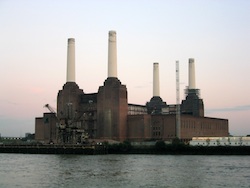 If you consider that the definition of a listed building is a structure that is acknowledged as being of national importance, and/or of special architectural and historic interest, then the concept of the development of a listed building could be something of a contradiction in terms. This is even more the case when you take account of the extent to which listed building consent is required for works that may affect the character of a listed building, including its internal or external alteration.
If you consider that the definition of a listed building is a structure that is acknowledged as being of national importance, and/or of special architectural and historic interest, then the concept of the development of a listed building could be something of a contradiction in terms. This is even more the case when you take account of the extent to which listed building consent is required for works that may affect the character of a listed building, including its internal or external alteration.
Indeed the Government’s National Planning Policy Framework makes it abundantly clear that when considering the impact of proposed development on a listed building “great weight should be given to the asset’s conservation”, and as listed buildings are “irreplaceable”, any harm or loss should require clear and convincing justification.
High profile redevelopments of listed buildings, such as the Battersea Power Station regeneration, are clearly not immune to the scope of the listed building regime. Indeed, it is for this reason that so much has been made not only in relation to the retention of the four Grade II* listed iconic chimneys as part of the regeneration scheme, but also of the fact that they will each be dismantled and rebuilt “brick by brick” in order to be visually identical to the original.
While the Battersea Power Development Company have gone to great lengths to suggest that this is their initiative, which has the “full support” of English Heritage, the cynical among us would justifiably speculate that this is more likely to be a “condition” of English Heritage granting consent to the redevelopment of the power station, given the vast costs involved in the dismantling of the chimneys and their rebuilding.
Yet, it is a little unfair to portray the listing regime as being an obstacle or hindrance to development. Over the years, the concept of “Enabling Development” to listed buildings has evolved, which is development to listed buildings that would otherwise be unacceptable, but for the fact that it would bring heritage benefits sufficient to justify the development being carried out. A classic example would be the construction of houses within a listed building (or the curtilage of a listed building) where planning policy would normally prohibit them, the profits from which would pay for repairs to the listed building.
The concept of “Enabling Development” was first confirmed as a legitimate planning tool in 1989 when the Court of Appeal in R V Westminster City Council ex parte Monahan upheld the validity of a planning permission authorising office development even though it was contrary to the development plan, on the basis that it would provide funds to improve the Royal Opera House in Covent Garden, which was unattainable by other means.
The notion of “Enabling Development” was first formally issued by English Heritage in 1999 and was subsequently reissued in 2001 only to be updated further in 2008 under the title “Enabling Development and the Conservation of Significant Places”, which represents English Heritage’s position on “Enabling Development” today.
“Enabling Development” should not be considered as an easy way of achieving development of listed buildings, as the policy very much emphasises the presumption against development unless seven specific policy tests are met; such as the development will not materially harm the heritage values of the listed building, it will secure the long term future of the place and its continued use for a sympathetic purpose; and the public benefit of securing the future of the listed building through such “Enabling Development” decisively outweighs the disadvantages of breaching other public policy. In other words, the overarching benefits to “Enabling Development” (and in particular the generation of funds) need to outweigh the perceived harm caused.
“Enabling Development” was clearly a material factor in the grant of planning and listed building consent for the redevelopment of Admiralty Arch for use as a 100 bedroom hotel and private members club, something which on the face of it could be considered as harming the heritage values of the building. Indeed, it is interesting to note from the report of the strategic director for building environment at Westminster City Council the emphasis on its support for the scheme, given that it secures “essential investment in one of London’s important historic landmarks and ensures its conservation thereafter through regular repair and maintenance”. This would seem to echo the raison d’etre of “Enabling Development”.
As to how the attitude towards the development of listed buildings will evolve going forward, much will depend on the outcome of the recently confirmed reorganisation of English Heritage, whereby the protection of listed buildings will fall within the remit of the Government-backed “Historic England”; and whether this will bring about a shift in stance towards the development of listed buildings generally.
About the author
David de Maupeou is a partner at Pemberton Greenish LLP.
Have you any commercial property events you'd like to tell us about? It could be networking, exhibitions, seminars, industry lunches or sporting fixtures. We will list them for free. Just email newsdesk@propnews.co.uk with the following details: Event name, date, time, venue, cost, booking info and a brief description of the event.
To list your property job vacancies on Property News. Email: richenda@propnews.co.uk.